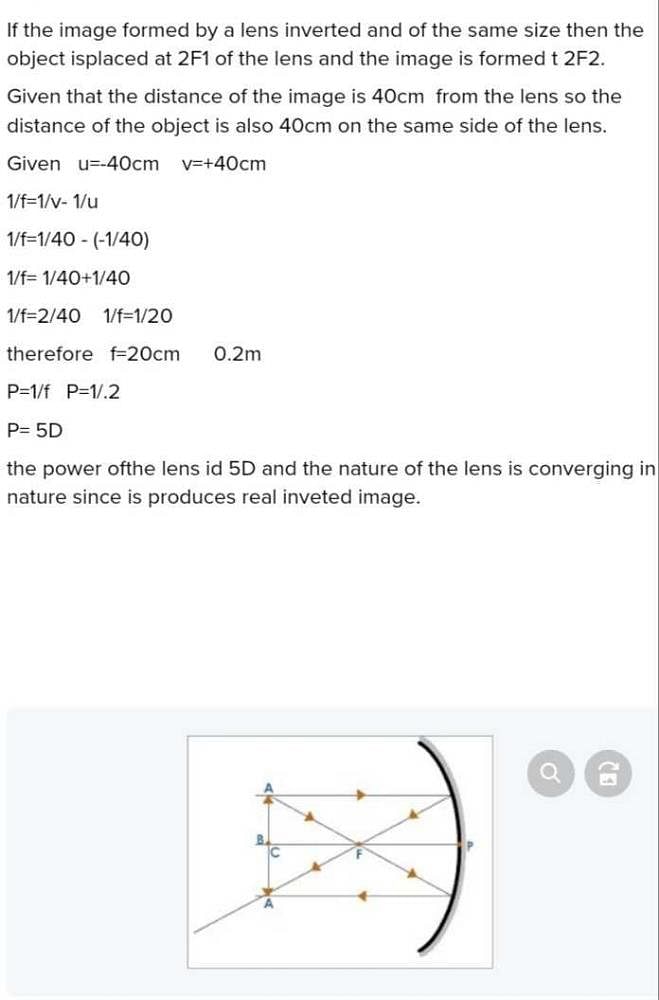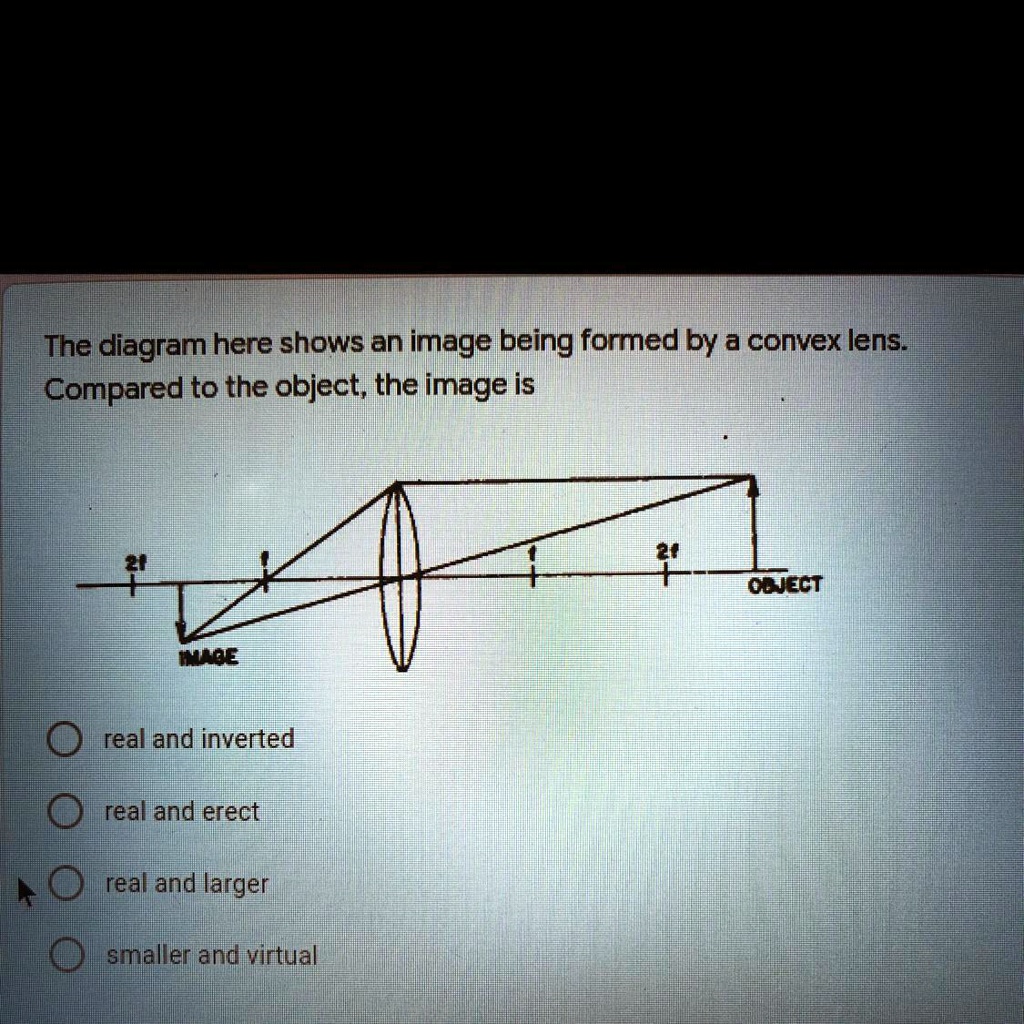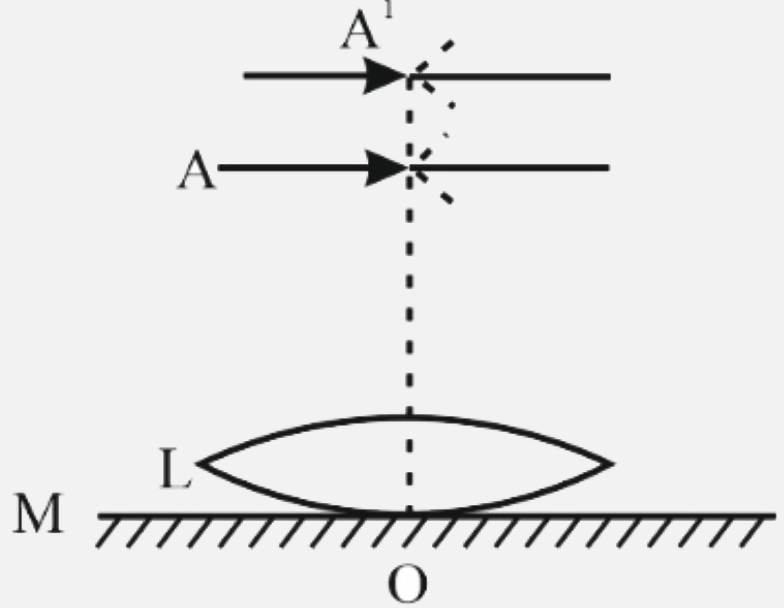Real And Inverted Image Is Formed By Which Lens
Real And Inverted Image Is Formed By Which Lens - For convex lenses, depending on the object's location relative to the lens's focal points and optical center, the image can vary from real and inverted. If a luminous object is placed at a distance greater than the focal length away from a convex lens, then it will form an inverted real. Convex (converging) lenses can form either real or virtual images (cases 1 and 2, respectively), whereas concave (diverging) lenses can form only.
Convex (converging) lenses can form either real or virtual images (cases 1 and 2, respectively), whereas concave (diverging) lenses can form only. For convex lenses, depending on the object's location relative to the lens's focal points and optical center, the image can vary from real and inverted. If a luminous object is placed at a distance greater than the focal length away from a convex lens, then it will form an inverted real.
For convex lenses, depending on the object's location relative to the lens's focal points and optical center, the image can vary from real and inverted. Convex (converging) lenses can form either real or virtual images (cases 1 and 2, respectively), whereas concave (diverging) lenses can form only. If a luminous object is placed at a distance greater than the focal length away from a convex lens, then it will form an inverted real.
A convex lens forms a real, inverted and same sized image as the object
Convex (converging) lenses can form either real or virtual images (cases 1 and 2, respectively), whereas concave (diverging) lenses can form only. If a luminous object is placed at a distance greater than the focal length away from a convex lens, then it will form an inverted real. For convex lenses, depending on the object's location relative to the lens's.
get a real and inverted image of same size as that of the object by a
For convex lenses, depending on the object's location relative to the lens's focal points and optical center, the image can vary from real and inverted. Convex (converging) lenses can form either real or virtual images (cases 1 and 2, respectively), whereas concave (diverging) lenses can form only. If a luminous object is placed at a distance greater than the focal.
Why Does A Concave Mirror Invert An Image Mirror Ideas
Convex (converging) lenses can form either real or virtual images (cases 1 and 2, respectively), whereas concave (diverging) lenses can form only. If a luminous object is placed at a distance greater than the focal length away from a convex lens, then it will form an inverted real. For convex lenses, depending on the object's location relative to the lens's.
The above image shows a thin lens of focal length 5m. What is the kind
If a luminous object is placed at a distance greater than the focal length away from a convex lens, then it will form an inverted real. For convex lenses, depending on the object's location relative to the lens's focal points and optical center, the image can vary from real and inverted. Convex (converging) lenses can form either real or virtual.
Image Formation by Lenses Physics
For convex lenses, depending on the object's location relative to the lens's focal points and optical center, the image can vary from real and inverted. Convex (converging) lenses can form either real or virtual images (cases 1 and 2, respectively), whereas concave (diverging) lenses can form only. If a luminous object is placed at a distance greater than the focal.
Diverging= SUV (small, upright, virtual) image regardless if it's a
For convex lenses, depending on the object's location relative to the lens's focal points and optical center, the image can vary from real and inverted. Convex (converging) lenses can form either real or virtual images (cases 1 and 2, respectively), whereas concave (diverging) lenses can form only. If a luminous object is placed at a distance greater than the focal.
Q2 Page 184 A convex lens forms a real and inverted image of needle
If a luminous object is placed at a distance greater than the focal length away from a convex lens, then it will form an inverted real. Convex (converging) lenses can form either real or virtual images (cases 1 and 2, respectively), whereas concave (diverging) lenses can form only. For convex lenses, depending on the object's location relative to the lens's.
SOLVED The diagram here shows an image being formed by a convex lens
If a luminous object is placed at a distance greater than the focal length away from a convex lens, then it will form an inverted real. For convex lenses, depending on the object's location relative to the lens's focal points and optical center, the image can vary from real and inverted. Convex (converging) lenses can form either real or virtual.
A thin convex lens L (refractive index = 1.5) is placed on a plane mir
For convex lenses, depending on the object's location relative to the lens's focal points and optical center, the image can vary from real and inverted. If a luminous object is placed at a distance greater than the focal length away from a convex lens, then it will form an inverted real. Convex (converging) lenses can form either real or virtual.
An object is placed 15 cm in front of a lens 'a' and lens gives real
If a luminous object is placed at a distance greater than the focal length away from a convex lens, then it will form an inverted real. For convex lenses, depending on the object's location relative to the lens's focal points and optical center, the image can vary from real and inverted. Convex (converging) lenses can form either real or virtual.
Convex (Converging) Lenses Can Form Either Real Or Virtual Images (Cases 1 And 2, Respectively), Whereas Concave (Diverging) Lenses Can Form Only.
For convex lenses, depending on the object's location relative to the lens's focal points and optical center, the image can vary from real and inverted. If a luminous object is placed at a distance greater than the focal length away from a convex lens, then it will form an inverted real.









